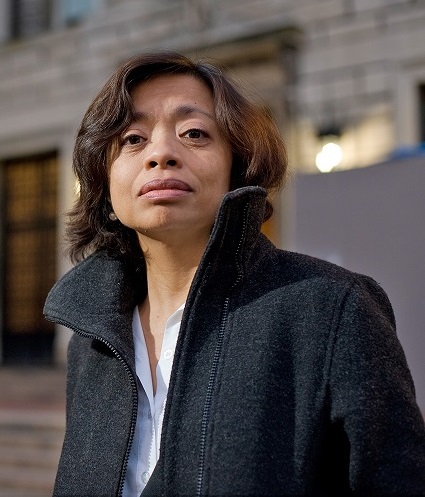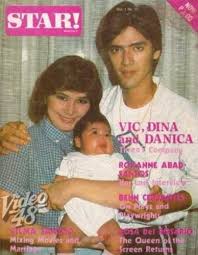Historical film depicts Antonio Luna’s fall and rise

Heneral Luna is portrayed by actor John Arcilla: A version of history that is part fiction and rumor
By now, any Filipino in any part of the world who has been extensively plugged into the social network of Facebook would have heard of “Heneral Luna,” the celebrated blockbuster on Antonio Luna. Among several ironies, Luna (1866-99) was reluctant to participate in the uprising against Spain but led the revolutionary army, the Katipunan, in resisting American occupation; like the Katipunan’s founder, Andres Bonifacio, Luna was assassinated by his own compatriots, possibly on orders (or at least with the compliance) of the “first” Philippine president, Emilio Aguinaldo.
The film, directed by Jerrold Tarog and scheduled to screen in the U.S. in a few weeks, boasts of several accomplishments beyond provoking renewed interest in several unresolved century-old controversies: it marked the emergence of vital new players in the burgeoning Philippine film scene; it exemplified ways of reworking a difficult and long-moribund local genre, the historical epic; and it demonstrated the material potential of social-network activism, with the movie’s box-office record actually increasing from one week to the next in direct proportion to the buzz generated among Facebook users.
Only the most assiduous students of Philippine cinema will be able to assert that, contrary to the general impression, “Heneral Luna” is not the first successful local historical epic. Several other period films, notably Eddie Romero’s “Ganito Kami Noon…Paano Kayo Ngayon?” (1976), are fondly remembered even though they do not purport to overtly depict any historical personage; Celso Ad. Castillo’s “Asedillo” (1972) and Peque Gallaga’s “Virgin Forest” (1985) deal with personalities involved in the Fil-American War and its aftermath; and several other titles, notably those of Gerardo de Leon, Marilou Diaz-Abaya, and Mike de Leon, tackle either the novels of Jose Rizal or the life of the national hero himself.
“Heneral Luna,” however, stakes a claim on Pinoy historical-epic production, and not only because it is the first well-received one made since the film industry’s transition to digital format. It evinces careful study of the tradition of an admittedly outmoded genre, one that was much-admired during the early years of cinema but has since been regarded with a certain degree of embarrassment, if not disdain, for its indulgence in “surge and splendor and extravagance,” as described by film expert Vivian Sobchack. By his own admission, Tarog reworked an already finished script not only by translating it from English, but also by adding several scenes and details, including a surprising amount of humor; in this way “Heneral Luna” manages to recall not just Romero’s work, but an unfairly forgotten early film on Artemio Ricarte by Ishmael Bernal, “El Vibora” (1972).
Unlike Romero and Bernal, Tarog exhibits a fluency in film language that enables him to bypass several of the standard elements of the historical epic genre. He had managed to work around the more technical requirements – the use of recognizable performers (as “Asedillo,” for example, had Fernando Poe, Jr.) and the distension of time and space – by casting appealing performers who were capable of larger-than-life delivery without losing histrionic credibility, and by covering so many sociopolitical issues over so much geographic space that the film actually seems to run longer than its barely two-hour limit and seems to be spilling out of the confines of the frame; by the time the American colonial officers congratulate themselves and mock the natives’ attempt at self-determination, and face the audience to deliver their lines, the gesture seems to be so consistent with the film’s disciplined use of postmodern devices that no one feels that some realist contract has been violated.
The more significant contribution of “Heneral Luna” has been in Tarog’s refusal to follow the historical epic tradition of “writing History” (again per Sobchack), but instead opts to write a (version of) history, admitting to the use of fiction (as announced in the prologue) and even rumor (as admitted in a closing-credit notice). In so doing, the film manages to evade and even subvert the several forms of ideological baggage that encumbered Classical Hollywood samples: the rational humanism, bourgeois patriarchy, acceptance of colonialism and imperialism, and validation of entrepreneurial and corporate capitalism that typified early Oscar winners, for example. More than any previous sample of Pinoy historical epics, “Heneral Luna” comes closest to what may be termed the counter-cultural extravaganzas of post-Classical Hollywood and European cinema.
Yet anyone who scours the internet for every available response to the film would have stumbled on dissenting commentaries, some of them harsh or outright dismissive. This would be understandable in any work of sufficient ambition and coverage: there will always be elements that will rub some people the wrong way, and in “Heneral Luna” these have arisen in the text’s critique of parochialism (painful for those who happen to be associated with certain tribes or regions identified as the villains of this specific version of history) as well as in the downplaying of American complicity in the revolution’s most contemptible tendencies. For a preferable corrective, I would refer such would-be critics to another fairly recent period film, ironically by an American, John Sayles’s “Amigo” (2010), which should be viewed as the history-from-below intertext of “Heneral Luna.”
For it would be to anyone’s future detriment to write off Tarog and his intention of completing a trilogy of filmic discourses on Philippine history. As a non-mainstream filmmaker, he had already come up with a personal series (which he calls his “camera trilogy”), and these already indicate a willingness to delve into uncomfortable material via innovative strategies. With “Heneral Luna” he has managed to be earnest about raising questions of patrimony and identity while remaining playfully distant and allowing the audience to figure out their own takes on the past and on the filmic future. It takes a certain type of commitment (or what the romantically inclined might call “love”) to embark on this kind of long-term project, so anyone about to watch the film better be prepared: displays of love can embarrass, and surrendering to it will be overwhelming.
Joel David is Professor for Cultural Studies at Inha University in Incheon, Korea and was founding Director of the University of the Philippines Film Institute. His archival blog, Amauteurish! (at http://amauteurish.com) contains digital editions of his books and articles on Philippine cinema.













